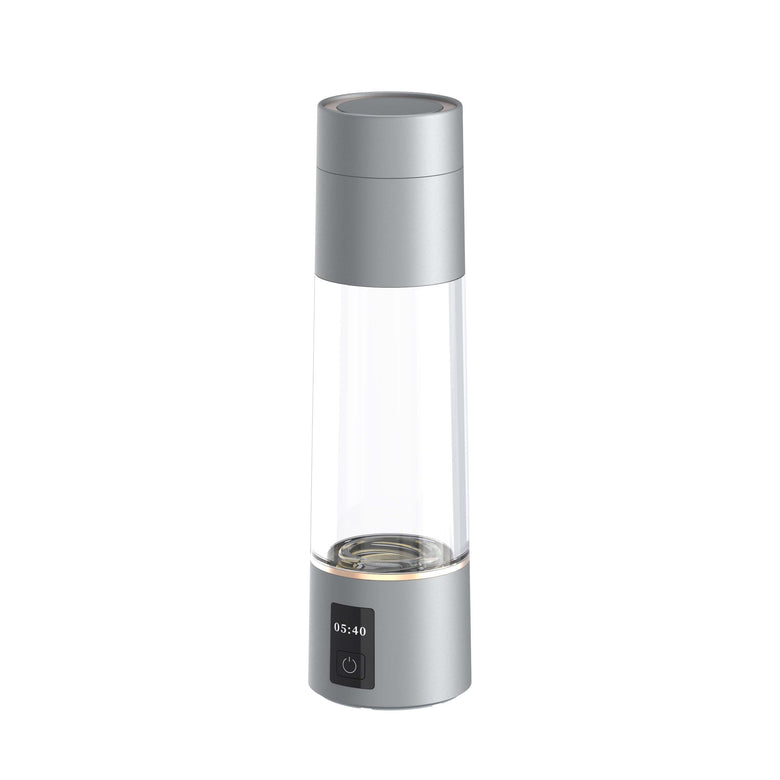How does a Hydrogen water bottle work
Updated
John Smith
Staff Writer
Our Commitment to Accuracy and Objectivity
Ocemida is committed to delivering reliable and unbiased information. Our editorial team, comprised of experienced editors and medical experts, meticulously reviews every article and guide to ensure the content is accurate, up-to-date, and free from bias.
Rigorous Fact-Checking Process
To uphold the highest standards of accuracy, we adhere to the following fact-checking guidelines:
Trusted Sources: We only cite reputable sources, such as peer-reviewed journals, government reports, academic and medical associations, and interviews with credentialed healthcare professionals.
Evidence-Based: All claims and data are supported by at least one credible source. Each article includes a comprehensive bibliography with full citations and links to the original sources.
Internal Linking: While we may include internal links to other relevant Ocemida pages for better navigation, these links are never used as primary sources for scientific information.
Expert Review: A member of our medical or scientific expert team provides a final review of the content and cited sources for all articles and product reviews related to medical and health topics.
By following these rigorous standards, Ocemida strives to provide readers with reliable and informative content.
Share with a friend
Key Takeaways
🟢 Hydrogen water bottles work by electrolysis to split the water into hydrogen and oxygen to infuse the water with molecular hydrogen.
🟢 Just fill the bottle with water and press a button. After 5 minutes, your hydrogen-enriched water is ready to drink.
🟢 The main components include a water chamber, electrolysis unit with electrodes, control circuit, filtration system, and safety valves to prevent pressure buildup.
The Science Behind the H2 Bottle
Hydrogen water bottles use electrolysis to infuse water with molecular hydrogen.
Inside the bottle, a proton exchange membrane (PEM) splits water molecules into hydrogen and oxygen. The device keeps the hydrogen while safely releasing the oxygen. Think of it like making tiny hydrogen bubbles that dissolve into your water.
How it works
Operating these bottles is straightforward.
First, charge the device using a USB cable.
Fill with water, press the activation button, and wait 5 minutes while electrolysis occurs. A light or sound indicator tells when your water is ready. The hydrogen-enriched water is then consumed within 30 minutes for optimal benefits, as the hydrogen gradually escapes.

Components of a Hydrogen Water Bottle
To understand how hydrogen water bottles work, it's crucial to know their key components:
- Water Container: The main body of the bottle where water is stored and hydrogen generation occurs.
-
Electrolysis Unit: The core component responsible for hydrogen generation, typically consisting of:
- Electrodes (Cathode and Anode)
- Solid Polymer Electrolyte and Proton Exchange Membrane (SPE/PEM technology)
- Power source (usually a rechargeable Li-ion battery)
- Control Circuit: Manages the electrolysis process and often includes user controls and displays.
- Gas Separation Chamber: Ensures that only the hydrogen bubbles trough the water.
- Safety Valves: Prevent excessive pressure buildup within the bottle.
The Hydrogen Generation Process
The process of generating hydrogen-rich water in these bottles relies on electrolysis under pressure. Here's a step-by-step breakdown of how it works:
- Water Filling: The user fills the bottle with regular drinking water.
- Activation: When activated, the control circuit supplies power to the electrolysis unit.
- Electrolysis: An electric current passes through the water via the electrodes. This process splits water molecules into hydrogen (H2) and oxygen (O2). 2H2O → 2H2 + O2
- Gas Separation: The proton exchange membrane (PEM) allows hydrogen ions to pass through while blocking oxygen.
- Hydrogen Dissolution: The generated hydrogen gas dissolves into the water by creating pressure in the chamber.
- Oxygen Removal: In most recent device generations, the oxygen is vented out of the bottle.
- Saturation: The process continues until the water reaches a desired level of hydrogen saturation.
Health Claims and Research
Studies suggest hydrogen water offers antioxidant properties and may reduce inflammation (2). Research indicates potential benefits for athletic recovery, energy levels, and cellular health (4). The dissolved hydrogen acts as a selective antioxidant, targeting harmful free radicals while preserving beneficial ones. However, many health claims require further scientific validation.
Visual demonstration
References
1. Electrolysis Wikipedia
2. The Science Behind Hydrogen Water. PubMed
3. Electrolysis of Water: An Overview. ScienceDirect
See MoreTable of Contents









































